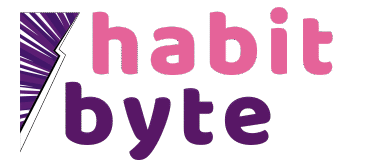Understanding Stress Management Training: Programs That Build Resilient Workplaces
Workplace stress is not just a personal hurdle; it is a performance, retention, and culture issue. Stress management training is a structured, skill-based approach that helps people recognize, regulate, and recover from stress so they can think clearly, collaborate well, and perform sustainably. Think of it as a user manual for your nervous system and a shared playbook for your team. Research indicates that chronic stress narrows attention, impairs working memory, and increases error rates,exactly the opposite of what complex work demands. Investing in these skills reduces sick days, improves engagement, and protects your talent pipeline.
- Performance: Calmer brains make clearer decisions and switch tasks with fewer errors.
- Retention: People stay where they feel capable, supported, and set up for success.
- Culture: A common language for stress makes it normal to get ahead of problems rather than hide them.
What Is Included in Effective Stress Management Training
The best programs are practical, measurable, and easy to use in real time. Look for these core components:
- Psychoeducation: How stress works in the body and brain, and why it narrows attention and judgment.
- Body-based skills: Breathing, posture, and micro-breaks that calm your nervous system quickly.
- Cognitive tools: Techniques from cognitive-behavioral approaches to reframe unhelpful thoughts.
- Interpersonal skills: Boundary setting, expectation clarity, and respectful pushback.
- Habit design: Tiny, repeatable practices that fit into meetings, emails, and breaks.
- Measurement: Brief pre and post check-ins and a few KPIs tied to wellbeing and performance.
Simple examples you can practice in minutes
- Box breathing (4-4-4-4): Inhale 4, hold 4, exhale 4, hold 4. Repeat 4 cycles to reduce urgency before decisions.
- Three-column thought record: Situation, automatic thought, balanced response. Keep a small template on your desk.
- Boundary script: To hit Friday’s deadline with quality, I will pause the dashboard until Monday. If the dashboard is higher priority, let’s move the deadline.
- Meeting bookends: Begin with a one-minute grounding; end with one risk and one resource to plan without panic.
- Focus sprints: Two 25-minute deep-work blocks with a five-minute movement reset, protected team-wide.
The SMART Program and Group Therapy: How They Fit
Stress Management and Resiliency Training (SMART) was initially developed in healthcare settings and combines mindfulness, core values, and practical micro-practices to help participants steady attention and reinterpret stressors more constructively. Organizations increasingly adapt SMART principles to create a shared language and simple daily rituals that lower stress and strengthen resilience. Research shows that consistent engagement with mindfulness- and resilience-based programs can reduce burnout, improve emotional regulation, and enhance overall wellbeing.
SMART-Inspired Micro-Practices
- Two-minute reset: Sit upright with feet grounded. Inhale for four, hold for two, exhale for six. Repeat for two minutes before high-stakes work to refocus and calm the nervous system.
- Notice, name, normalize: Recognize tension or anxiety (“I notice my chest is tight. That is stress. Many feel this before presentations.”). Labeling emotions reduces their intensity and creates mental space for thoughtful responses.
- Mindful transitions: Use brief pauses between tasks to stretch, breathe, or reflect. This reduces cumulative stress and prevents cognitive overload during the day.
Integrating these micro-practices consistently fosters a workplace where stress is acknowledged without stigma, attention and focus improve, and emotional resilience becomes habitual. As individuals learn to respond to pressure with calm and clarity, collaboration strengthens, errors decrease, and overall wellbeing rises. By blending structured SMART principles with practical, everyday exercises, organizations can build a sustainable culture of resilience,supporting both employee performance and long-term organizational health.
